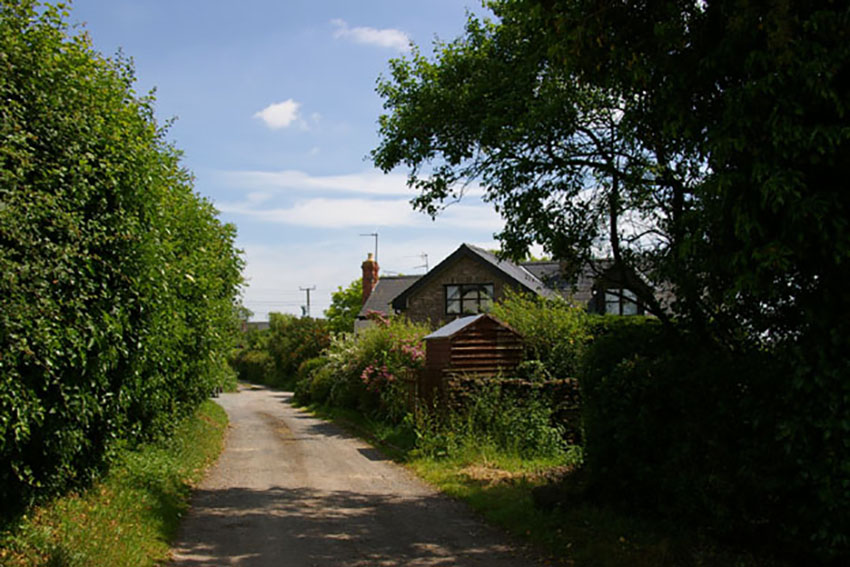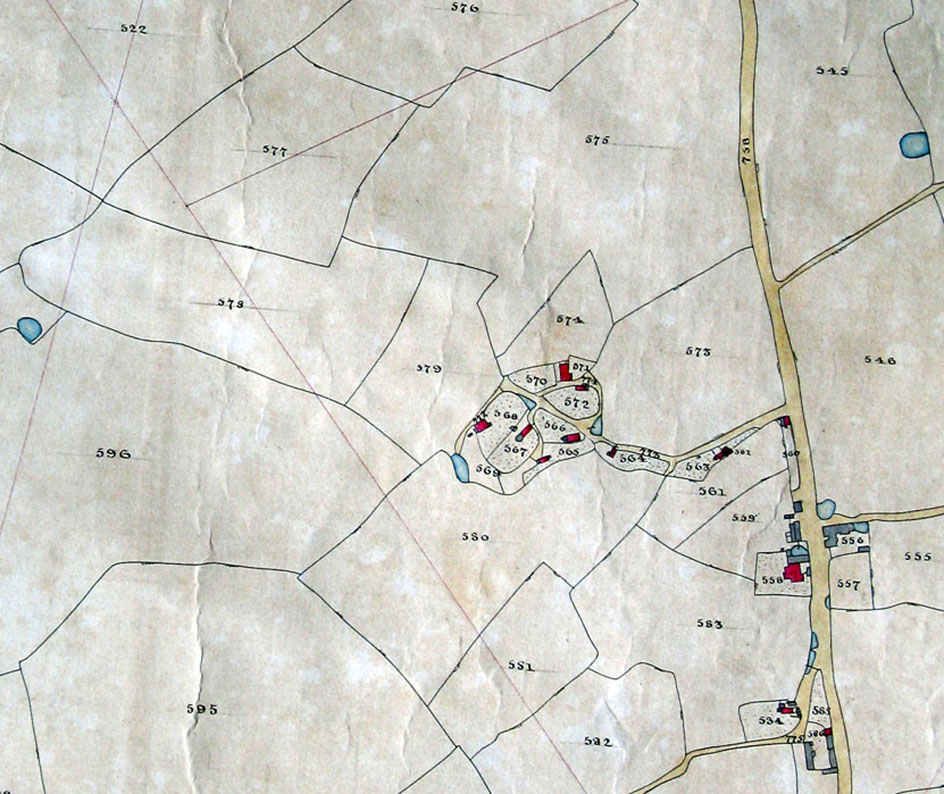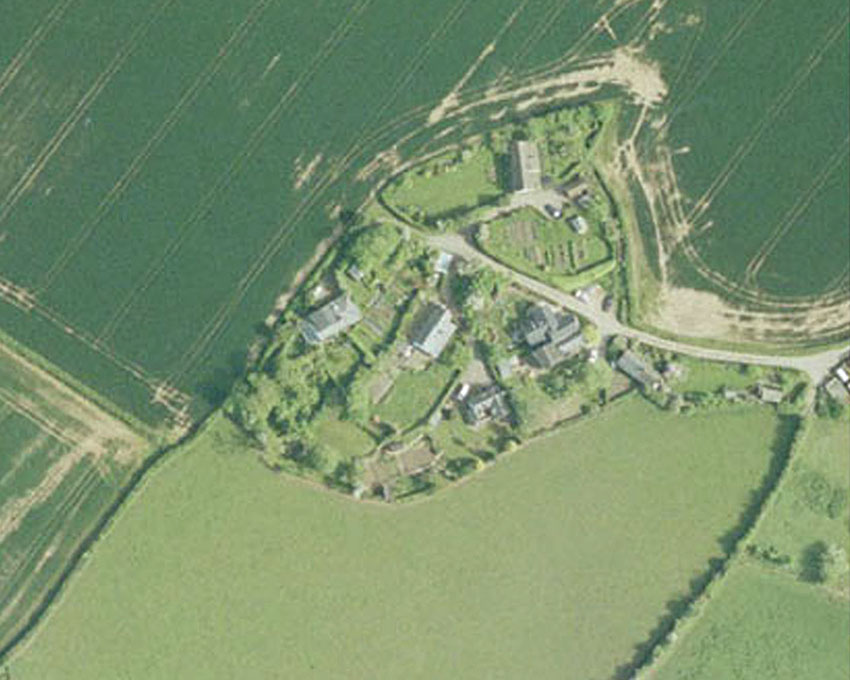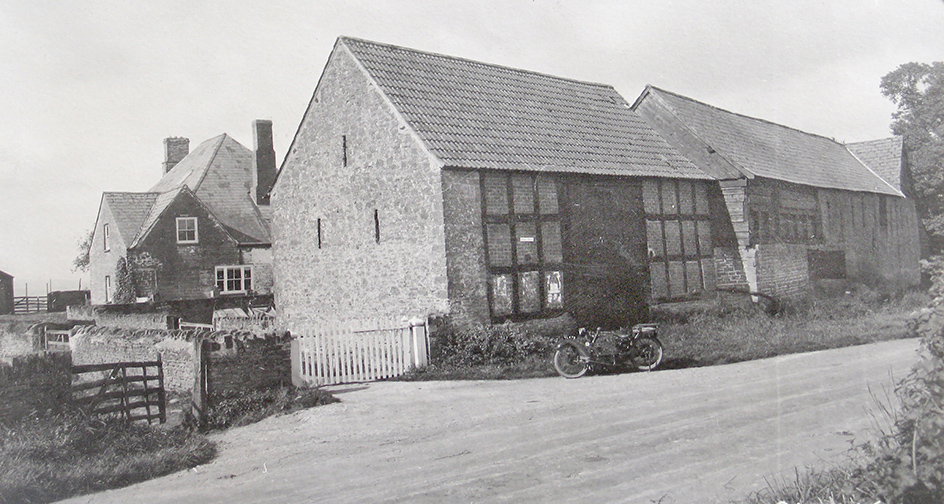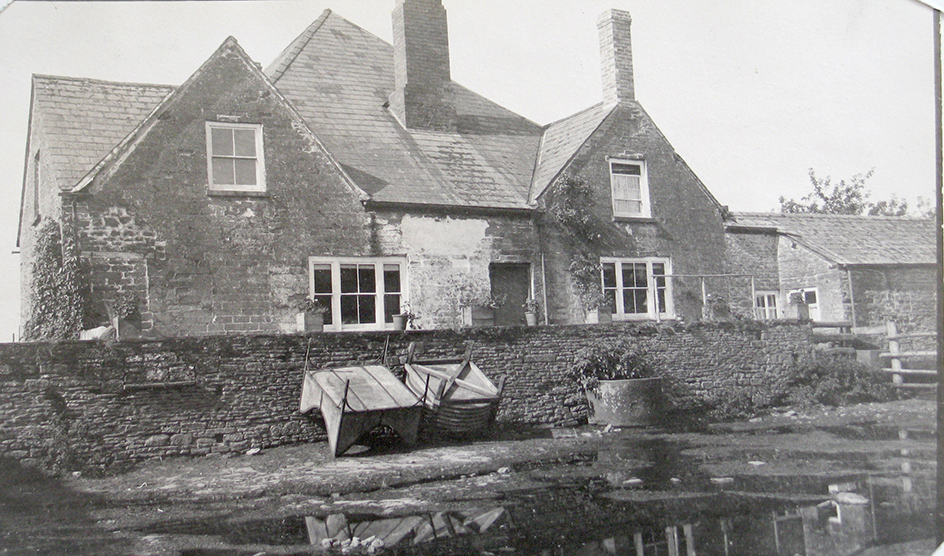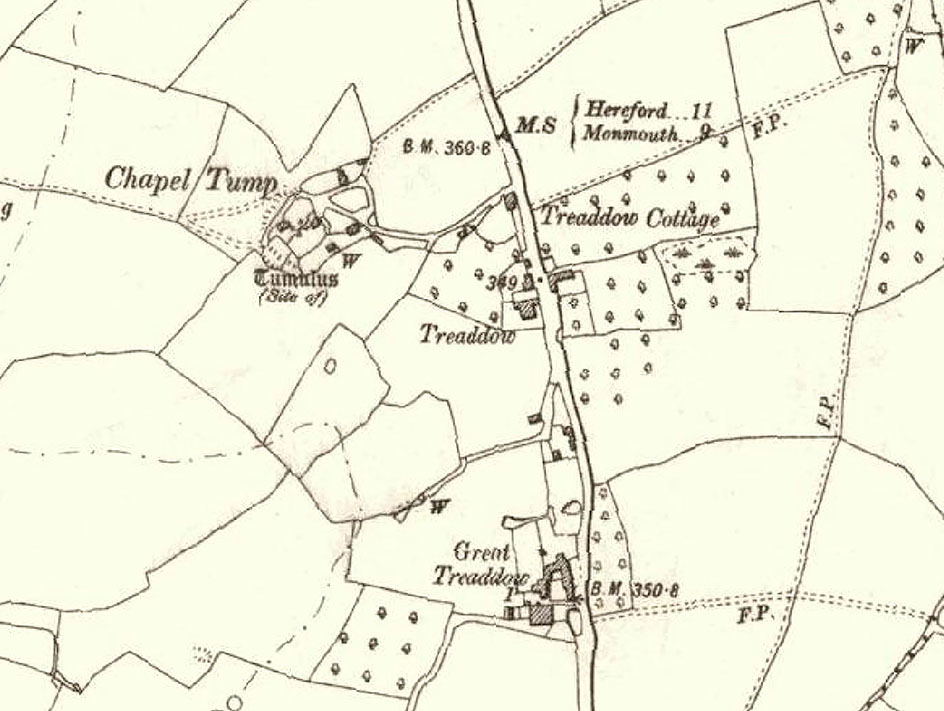Treaddow is recorded as Trairat in 1136-42. The original form may have been something like Tre'r-adwy - settlement at a gap [Bruce Copplestone-Crow, Herefordshire Place-names]
Chapel Tump, although now in a much degraded condition, is clearly originally a medieval moated site, although we know nothing of its earlier history.
At some stage a squatter settlement appears to have grown on the site. Several settlements in the area appear to have originated as squatter communities.
Treaddow was the township - villata - of Trerado in Henry VIII's taxation of 1525 when the inhabitants and their wealth was assessed as follows:
| name | assessment |
|---|---|
| John ap Gwyllym | 20 pounds |
| William Hegyn | 40 shillings |
| John Machyn | 60 shillings |
| John Seymour | 60 shillings |
| Nicholas Duggins | 40 shillings |
| John Hythe | 20 shillings |
| Robert Smyth | 6 pounds 13 shillings and 4 pence |
| William Walker | 60 shillings |
| Thomas Hawker | 20 shillings |
| Ralph a Mynde | 20 shillings |
| John a Mynde | 20 shillings |
| John Gough | 6 pounds 13 shillings and 4 pence |
Tax assessment from Herefordshire Taxes in the Reign of Henry VIII edited by M A Faraday: Woolhope Naturalists' Field Club, Herefordshire, 2005
The term 'Township of Treaddow' was still being used in 1841, when it appears in the census returns, although the only people ennumerated there are the Stone family; 55-year-old farmer Samuel Stone, 50 year old Mary and three other Stones Samuel, Henry and Elizabeth, and although the 1841 census provides little information, these were presumably the children
On the Hentland tithe map (1840) there are eight occupied properties (marked in red) on Chapel Tump and its approach lane. They are described as 'cottages and gardens' and are owned by six different landowners.
In 1851 the census records 62 inhabitants in 14 households on premises described as being at Chapel Tump.
These people derived their livelihood exclusively from agriculture. Only one household was headed by a tradesman. James Heyward was a carpenter: but he and his wife and children shared their home with two agricultural labourers recorded as 'lodgers'. Two household were headed by 'paupers'. 49-year-old widow, Ann Bird was a pauper even though she had two teenage sons who were agricultural labourers. And in these pre - retirement pension years, 80 year old Thomas Hill, who lived with his 76 year old wife Ann, was also a pauper. A few other Chapel Tumpers 'lived on the parish'. 77 year old Rebecca Edwards shared her home with her eight-year old grandson.
Every other household at Chapel Tump was headed by a (male) agricultural labourer. Only one wife has an occupation listed. 56 year old Elizabeth Jones is a 'laundress'. Her husband and son, and their lodger, are agricultural labourers.
Just 24 people are listed at Chapel Tumps ten years later, inhabiting nine houses.
This community is not easily seen in the census of 1871. The designation 'Chapel Tump' had disappeared completely and the households are enumerated under the name Treaddow as 'ditto'. It was still there however and appears in the 1881 census.
Oddly, considering all the property in Chapel Tump appears to be accounted for on the Tithe map, some part seems to have been regarded as common land at the end of the 19th century. In 1899 one attempt to utilise it for private use was vigorously resisted. On Saturday 30 September the Hereford Times had an article entitled 'UPHOLDING COMMON RIGHTS AT HENTLAND'.
'About six months ago a sawpit was sunk in the piece of common land at Chapel Tump, Hentland, and on Friday last, the villagers and neighbours, numbering between 50 and 60, assembled, and proceeded to uphold their rights by filling it up and clearing away the obstruction.'
'Mr H. M. Davies, yeoman, sent a small cask of cider. A bonfire was started on the land, and the proceedings were enlivened music and singing. Mr J. Scudamore, in few well-chosen words, called the attention those present to the fact that it had been common land from time immemorial, and said it rested with then to keep it so and to see that their rights were not interfered with.
Hearty cheers given for Mr H.M Drew, Mr H. H. Stock, Mr J. Scudamore, and the ''Mayor of Chapel Tumps.''-The National Anthen having been sung, the gathering dispersed.
Great Treaddow Farm is a stone-built Grade II Listed Building. In 1931 the Royal Commission on Historic Monuments described it
The middle part of the N. side of the building is possibly of 15th-century date. Additions on the E. and S.E., partly on the site of earlier work, are of late 16th or early 17th-century date. The W. wing was built towards the end of the 17th century, enclosing the S.W. angle of the early building.
300 metres to the north of Great Treaddow is a house called Little Treaddow. Confusingly, this is sometimes referred to simply as Treaddow. the Royal Commission description -
The N.W. wing and the W. wall of the W. wing are the remains of a late 16th-century building. In the first half of the 17th century the main chimney-stack was added on the E. side of the N.W. wing and what is now the eastern part of the house was re-built.
The census of 1851 records Richard Scudamore and his sisters Charlotte and Sarah as residents at Treaddow that night. A fourth resident recorded in their household was 23-year-old agricultural labourer John Brown. Richard, aged 22, was a farmer of 60 acres, employing one labourer; presumably John Brown. Charlotte, 22, was recorded as 'housekeeper' while 10-year-old Sarah was a schoolgirl.
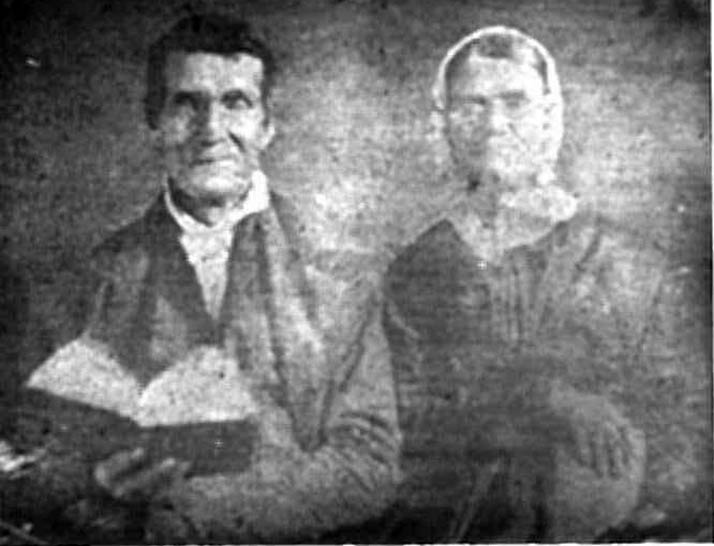
Joseph and Elizabeth
The Scudamore family had a prominent presence in 19th century Hentland. This family was distantly related to the more famous Scudamore branches at Kentchurch and Holme Lacy.
Richard, Charlotte and Sarah were three of the twelve children of Joseph and Elizabeth Scudamore, who lived at Little Pengethley Farm.
Pengethley Manor 700 metres south of St Dubricius Church, is in Sellack parish, but Little Pengethley, on the opposite side of the main Hereford to Ross road (now the A49) is in Hentland. Joseph Scudamore had been born in the village of Abenhall, just outside Mitcheldean in the Forest of Dean, while Elizabeth came from Mitcheldean itself.
Joseph was the fourth son of Richard and Sarah Scudamore of Abenhall. The first and second sons Richard and John had remained in Gloucestershire for the whole of their lives. The third son, Thomas, the fifth George, and the sixth, Philip had resettled in Illinois.
Joseph and Elizabeth had been at Little Pengethley in 1841. On the night of the census, 6th June, at home with their parents at were 15 year-old Elizabeth, 12-year-old Richard, and 5-year-old Mary. Charlotte, then aged 10, was at boarding school in Ross. The elder Elizabeth was eight months pregnant with Sarah, who would be born on 30th July.
On that night 16-year-old Godwin Scudamore was also away from home, at Little Treaddow, with his sister Ann, 9, and brother, John aged 6.
The oldest person in that house was Mary Hale aged 65, although as is common in the 1841 census, no occupation is given. Ann Hale had been baptised at Longhope in Gloucestershire. Elizabeth Scudamore's maiden name was Hale and her father, James Hale, had been baptised at Longhope Jan 26th 1772 – 'bastard son of Ann'. This is not likely to be the same Ann Hale, as a woman who had given birth 69 years earlier would have been at least in her 80s by 1841, But with illegitamacy such a disgrace a certain amount of dishonesty in recording is likely. Another entry at Longhope is for Feb 10th 1779, the baptism of 'Maria, natural daughter of Mary Hale, widow'.
All a bit obscure, but the Ann Hale at little Treaddow is likely to be an older relative of Elizabeth Scadamore, associated with some family scandal years before.
In 1844 Godwin Scudamore emigrated to the United States, landing in New York that November.
